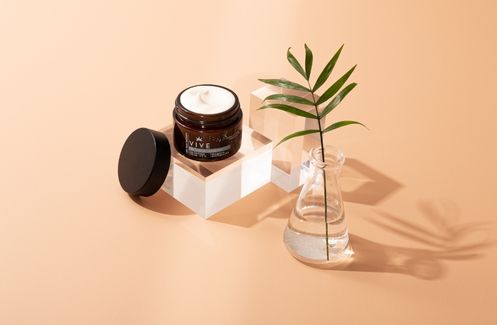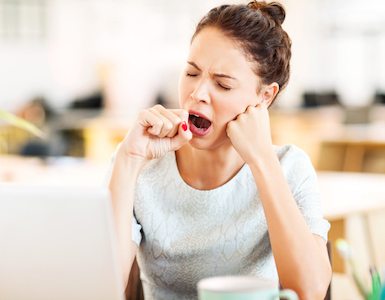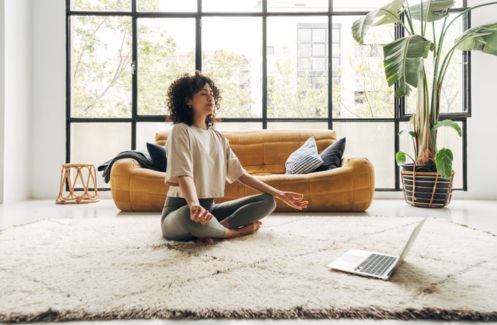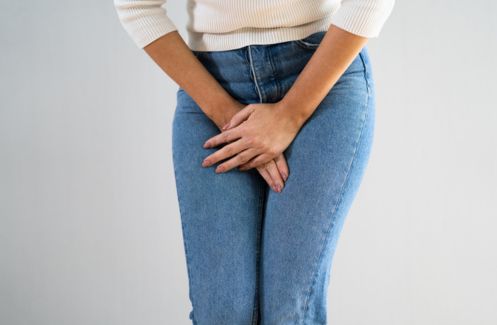There are all sorts of reasons why you may be feeling aches and pains in your muscles and joints. Here are some strategies to keep you healthy
Muscle and joint pain is one of the most common problems seen by GPs.
Indeed, a new survey (published by muscle and joint care experts at Deep Heat, Deep Freeze and Deep Relief), on 1000 people shows that 73% had experienced some sort of muscle issue, with back pain being the most common problem (38%), followed by aches and pains in legs (30%), shoulders (23%), knees (22%), neck (18%) and calves (15%).
Nearly half of those questioned said they had experienced muscle pain for no apparent reason and 62% said they had experienced pain as a result of a muscle strain or sprain. While, 40% had reported an exercise related injury.
Common causes
Everyday aches and pains that affect the muscles and joints can occur for all sorts of reasons including injury, strain or poor posture. Sometimes, it’s those unconscious, routine activities that can lead to problems.
‘Simple day to day movements, such as picking up the shopping awkwardly can lead to painful muscle injuries, in the back and knees, for example,’ says Physiotherapist Sammy Margo.
Nearly half of those questioned said they had experienced muscle pain for no apparent reason
‘Also, over the last three years, more people are now working from home. For many, this means working from the sofa, or at the kitchen table, rather than sitting in an ergonomically designed office chair.’
‘If you’re sitting, hunched over a lap top, on a soft surface that doesn’t support your body in the right way, and repeatedly cradling the phone between your ear and shoulder – this can play havoc with your muscles, leading to neck and shoulder problems,’ says Sammy Margo.
In a recent study (Bulletin of Faculty of Physical Therapy, 2022) it was found that working from home increased musculoskeletal disorders (such as neck and shoulder pain) due to prolonged computer use and lack of an ergonomic workspace.
READ MORE: 7 pain management methods for Osteoarthritis
Pain affects all ages
Age is also a factor when it comes to muscle and joint pain.
‘Muscles and bones get weaker as we get older, this can also lead to more aches and pains,’ says Sammy Margo.
Latest research shows that a sedentary lifestyle doesn’t do anyone any favours, including the very young. This is demonstrated by the findings of a recent study (Brazilian Journal of Physical Therapy, 2022) which shows that increasingly sedentary behaviour in adolescents (aged 10 – 17) is associated with a greater incidence of neck and back pain.
The impact of pain and mood
When you’re in pain, it’s very hard, if not impossible, to carry on as normal. If you’ve pulled, or sprained a muscle or your joints feel achy, this can make even the simplest movement feel like agony. When you feel like this, the pain can be all consuming.
So, as well as affecting your physical wellbeing pain can also impact your mood. The Deep Heat survey also showed that pain caused 32% of people to feel tired, 28% to feel frustrated, 24% to feel unhappy and 24% reported that pain made them grumpy.
Indeed, 22% said they felt unmotivated, 22% said they felt restless and 18% said pain made them feel lethargic. In all, 66% said their mood deteriorated due to muscular or joint pain.
Many don’t realise its effects can be much worse than the symptoms themselves
The negative impact of pain on mood is also echoed in a new global survey, the Haleon Pain Index (2023). The survey analysed 18,097 people across eighteen countries and shows, that while the incidence of pain has not gone up in the last ten years, the social and emotional impact of pain has grown by 25%.
Half (49%) of those questioned reported feeling stigmatised, a third (32%) feared being judged, and one in three people regularly experienced feelings of loneliness when in pain.
‘Everyday pain is a health issue that can easily be dismissed or trivialised,’ says Psychologist, Dr Linda Papadopoulos.
‘Many don’t realise its effects can be much worse than the symptoms themselves’.
READ MORE: Got back, neck and shoulder pain? This foot massage could help
5 strategies to prevent and manage everyday aches and pains…
#1 Healing Sleep
‘When you don’t get enough sleep, pain muscles and joints feel worse; it’s when you are sleeping that your body heals,’ says Sammy Margo.
Research shows sleep deprivation can alter the nerve signals in the brain and reduce your pain threshold. It can be a vicious cycle though, as if you’re in pain, this can make it harder to fall asleep.”
Try: Viridian Cherry Night, £29.85 for 150g – a natural bedtime tonic that combines Morello cherries, a natural source of melatonin, red date extract, the amino acid, glycine and magnesium. Available – viridian-nutrition.com
#2 Diet and Supplements
‘What you eat can have an enormous impact on pain,’ says Nutritionist Rob Hobson.
‘When there’s pain, there’s inflammation and eating foods that promote inflammation also makes pain worse.’
Rob Hobson recommends:
Eat anti-inflammatory foods – try to eat at least one serving of oily fish each week which include salmon, sardines, mackerel and trout. Research has also suggested that omega 3 supplements may help to improve pain and joint function. Omega 6 fatty acids are inflammatory. So, stick to extra virgin olive oil and avoid all processed foods. Meat is also a common source of omega 6 so try going meat-free a few days of the week.
Try: Healthspan Opti-Turmeric, £16.95 for 60 (500mg) capsules, with added vitamin C, for joint and immune health.
Turmeric contains the compound curcumin which has a powerful anti-inflammatory effect. You can add it to food (eg: curries, soups) and drinks. It’s best absorbed with the addition of black pepper.
Try Healthspan Magnesium & Glucosamine Gel, 150ml, £15.95 – a fuss−free gel formulation containing glucosamine, a natural substance found in the connective tissue of our joints, as well as the multi−faceted mineral magnesium, which keeps bones and muscles healthy.
What makes this supplement gel special is its unique blend of natural ingredients, specifically added to provide a warming and cooling sensation to the areas of your body that need it most.
There’s capsicum, the substance that gives chilli peppers their heat, plus cooling eucalyptus oil, carefully distilled from fresh leaves, and peppermint oil for its high content of menthol. Finally, pure oil of wintergreen which contains 99 % methyl salicylate, a natural substance widely rated for its soothing effects.
Eat at least five servings of fresh fruit and vegetables a day – these are high in protective antioxidants (found predominantly in brightly coloured plant foods).
These can help to reduce oxidative stress which research suggest may be the underlying mechanism for a variety of pain related disorders, such as osteoarthritis (OA). may be involved in the development and progression of OA.
Foods such as green vegetables, citrus fruits, red peppers, avocados contain anti-oxidant vitamins A, C and E.
READ MORE: Upper body feeling stiff? These shoulder and arm posture exercises could help
#3 Keep your posture in check
‘The way you walk, stand and sit is vital to help avoid pain,’ says Margo who recommends the following tactics.
- When working, sit upright on a comfortable chair. If you work from home, think about investing in an office chair. Your feet should be flat on the floor in front of you, with your knees slightly lower than your hips. Keep your shoulders relaxed.
- When using the keyboard, make sure your wrists and forearms are straight and level with the floor. This can help to prevent repetitive strain injury. Leave a gap of about 10 – 15cm at the front of the table or desk, to rest your hands between typing.
- Your forearms should rest at a comfortable height on a table, or desk, with your laptop or screen at eye level, to avoid any neck pain.
- When you move, walk with your shoulders back and try not to slouch over. Try to avoid walking whilst looking down at your phone.
- If you spend a lot of time on the phone, try using a headset. Keeping your phone constantly between your ear and shoulder can strain the muscles in your neck.
#4 Exercise
If you want to keep your muscles and joints healthy, you need to keep physically active. A recent meta-analysis (American Public Health Association, 2018) suggests that being predominantly sedentary is as bad as smoking for health.
But, as well as being essential for overall good health, regular exercise also helps to prevent joint stiffness, muscle tightness and improves circulation.
‘Research shows that regular exercise can reduce the risk of hip fractures by 68%, slash the risk of osteoarthritis by 83% and decrease the chance of falls among older adults by 30%,’ says Margo.
‘It also has other health benefits. Studies suggest it can lower the risk of breast cancer by 20%, cut the odds of developing dementia by 30% and reduce the risk of depression by 30%.’
An effective warm up loosens tight muscles and tendons
‘The NHS recommends that we do at least 150 minutes of moderate intensity, or 75 minutes of vigorous intensity exercise, a week,’ says Margo.
‘This should be combined with regular strengthening activities that work all the major muscle groups (legs, hips, back, abdomen, chest, shoulders and arms) on at least two days a week. Although, exercise is great for strengthening muscles and joints, you need to be careful.
‘So, warming up before exercise, and cooling down afterwards is vital. An effective warm up loosens tight muscles and tendons, increases blood flow and minimises the risk of injuries.’
To enhance your warm-up, massage Deep Heat Muscle Massage Roll-on Lotion, £5.75 onto calves, thighs, upper arms and shoulders, or any areas that feel tight or achy.
READ MORE: 5 easy steps to help sciatica – the physio’s guide
Muscle Rehab Exercises to do at Home
Personal Trainer, Elyn Marwick and Physiotherapist, Sammy Margo have put together these 4 simple muscle rehab exercises, designed to help muscles repair and become stronger, more flexible and mobile.
Bird Dog – for recovery from back pain
- Get down on all fours with your wrists directly under your shoulders and knees under your hips.
- Keeping your back and core engaged, extend your left arm out in front of you at the same time as extending your right leg out behind you. Hold for 10 seconds.
- Repeat using your right arm and left leg. Do this 3 times on each side.
Back extension – to aid with lower back pain
- Lie face down on the ground, keeping your arms down by your side.
- Slowly, pressing your hips into the ground (or mat) and keeping your face and neck neutral, lift your upper back and feet off the floor.
- Hold for 10 seconds, then slowly lower yourself back into the start position.
- Repeat 4 times.
Shoulder flexion – to help with shoulder injury recovery
- Lie on your back, with your arms by your side and your knees bent, with feet flat on the floor.
- Clasp your hands together in front of your body. Keeping your arms straight, bring them overhead.
- Pause, then return to the start. Repeat 5 times.
Glute bridge – for back, hamstrings and glutes
- Lie back on the floor with knees bent and feet flat on the floor.
- Keeping your arms by your side, slowly lift your hips off the ground, until your thighs and upper body form one straight line.
- Pause, then lower back down. Repeat 10 times.
READ MORE: 7 pain management methods for Osteoarthritis
Hot and cold therapy
The first thing you can do for an injury is to use cold therapy.
‘Cooling therapy can decrease blood flow and may help calm minor aches and pains in muscles and joints,’ says Elyn Marwick.
‘The golden rule to remember is PRICE – Protect, Rest, Ice, Compress and Elevate.’
Use whatever you have to hand to apply cold to the area – eg: a pack of frozen peas, ice wrapped in a cloth.
‘After 72 hours, once swelling and inflammation have subsided, apply warmth to the area, to increase blood flow and promote healing.’
Cooling therapy can decrease blood flow and may help calm minor aches and pains
To alleviate muscular pain in muscles, strains and joint stiffness, try Deep Heat Pain Relief Heat Patch, £6.82 for 4 odourless heat patches that you can use for back, hip, thigh, calf, arm, neck and shoulder pain. Available boots.com
Try also Healthspan’s CBD Balm, 30g, £21.95 – a soothing CBD Balm infused with 180mg of broad−spectrum CBD oil. All Healthspan’s CBD oils are 100% naturally sourced from legally grown EU hemp plants and cultivated without any harmful pesticides.
CBD balm is now used to relieve localised pain and to soothe chapped, dry or irritated skin and scars. The balm also contains a selection of expertly blended essential oils from nature, such as eucalyptus, arnica, sunflower, lavender and chamomile.
This results in a relaxing and aromatic scent, with floral tones and calming lavender. Using topical treatments together with oral pain medication, such as paracetamol or ibuprofen, may help to reduce the number of tablets you need.
Applying a topical joint cream or gel after a warm bath or shower, or after exertion, helps it sink in quickly.
Like this article? Sign up to our newsletter to get more articles like this delivered straight to your inbox.


































































































































